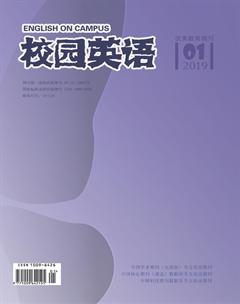Translation of Tourism Slogans from the Perspective of Eco—translatology
肖付良 谢丹
【Abstract】This paper focuses on discussing how to translate tourism slogans from the perspective of eco-translatology so that we can achieve high-quality translation that can effectively spur foreign tourist arrivals to the tourist destinations in China.
【Keywords】Eco-translatology; tourism slogan; translation
【作者簡介】肖付良(1971-),女,湖南娄底人,硕士,娄底职业技术学院文化传播学院教授,研究方向:商务英语与应用语言学;谢丹(1983-),女,湖南娄底人,硕士,娄底职业技术学院文化传播学院副教授,研究方向:商务英语教学与翻译。
【基金项目】本文系湖南省教育厅科学研究项目《生态翻译学视角下的旅游广告语翻译研究》(项目编号:16C1355)和《生态翻译学视角下湖南红色旅游外宣资料翻译研究》(项目编号:17C1344)的阶段性成果。
I. Introduction
Tourism slogans are designed to market the tourist destinations and get the target audiences buy-in for the tourism-related products or services. It is an important way for tourism operators to show tourists the image of tourist destinations and the charm of tourism products, services or experiences. With the acceleration of globalization and the deepening of Chinas opening up to the outside world, international exchanges have become more and more frequent. It is predicted by World Tourism Organization that China will become the number one tourist destination in the world by 2020. Thus it is very important to focus on the discussion of translation of tourism slogans from the perspective of eco-translatology because creative and attractive tourism slogans are effective marketing tools of tourist destinations which will attract the target audiences to develop interests in them as ideal holiday destinations.
II. An Overview of Eco-translatology
Eco-translatology is an ecological approach to translation studies or translation studies from an ecological perspective that can be interpreted as the study of translation by adopting ecological concepts. It was first proposed by Professor Hu Gengshen, a well-known domestic scholar, based on the theory of “translation as adaptation and selection” (Hu 2004). Translation is defined as “as a translators adaptation and selection activities in a translational eco-environment”. The translational eco-environment includes the worlds of the source text and the source and target languages, the linguistic, cultural, and social aspects of translating, as well as the author, client, and readers. Professor Hu holds the opinion that the process of translating is a production of target texts by ‘natural selection via the translators adaptation to the eco-environment and the translators selection of both the degree of the adaptation and decisions about the form of the final target text in terms of the Darwinian principle of natural selection. He puts forward “the adaptive selection and selective adaptation” translation principle as well as “the multi-dimensional transformation” translation method, that is, adaptive transformation from the linguistic, cultural and communicative dimension.

